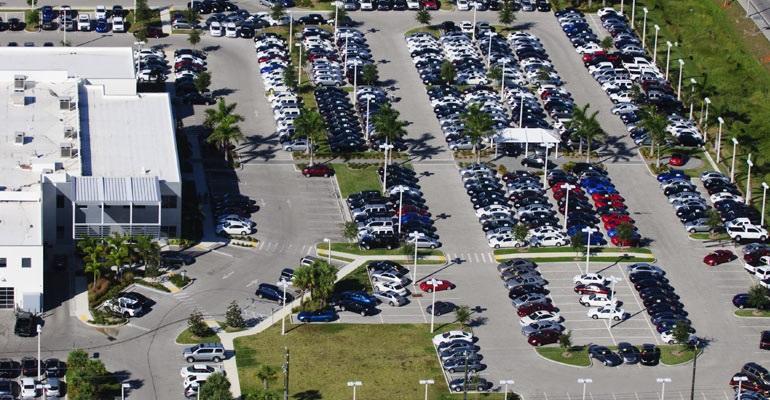The economy is applying the brakes to auto sales.
Cox Automotive economists say they have lowered their full-year forecast from 14.4 million units to 13.7 million. Sales are expected to finish 9% lower than 2021, the lowest level in a decade.
“The Fed (Federal Reserve Board) wants to break demand even more, and the Fed is getting what it wants,” says Jonathan Smoke, chief economist for Cox. “I would argue actually it's amazing to see demand holding up the way it is and not getting worse. But with rates rising by as much as two more percentage points by year-end, sales are likely to fall further.”
The result is a 3.9% decline in new-vehicle sales from August, and third-quarter sales finishing at about 3.4 million units, down 1% from third-quarter 2021 and down only modestly from the 3.5 million units sold in Q2 2022. For comparison, sales in Q3 2019 reached 4.3 million.
Cox economists expect September sales to rise nearly 8% from a year ago but remain relatively low at 1.1 million units.
One reason for the decrease in sales is price. Demand creates a seller’s market for cars, with few incentives offered and giving buyers very little negotiating power. Cox reports rising interest rates may make buyers balk at higher vehicle prices, currently averaging 102% of MSRP.
Still, as of now, sales have slowed but have not halted.
“New-vehicle sales have been remarkably consistent through the third quarter, with sales of approximately 1.1 million units each month in July, August and September,” says Charlie Chesbrough, Cox’s senior economist. “New-vehicle inventory has been holding steady, with days’ supply near 40.”
General Motors, Ford and Tesla will be among the biggest gainers year-over-year in Q3, with many Japanese brands, still struggling with inventory issues, booking the most significant declines, notably Honda and Nissan.
The new-vehicle market began suffering from a significant lack of inventory in September 2021, and the sales pace fell to 12.3 million. Inventory has improved since but remains well below pre-pandemic levels.
“The supply shortage has likely created some pent-up demand – folks who were essentially waiting in line for inventory to return,” says Chesbrough. “But the recent changes in the economic outlook from rising interest rates are beginning to chip away at demand, and the waiting line for new vehicles is likely getting much shorter.”





